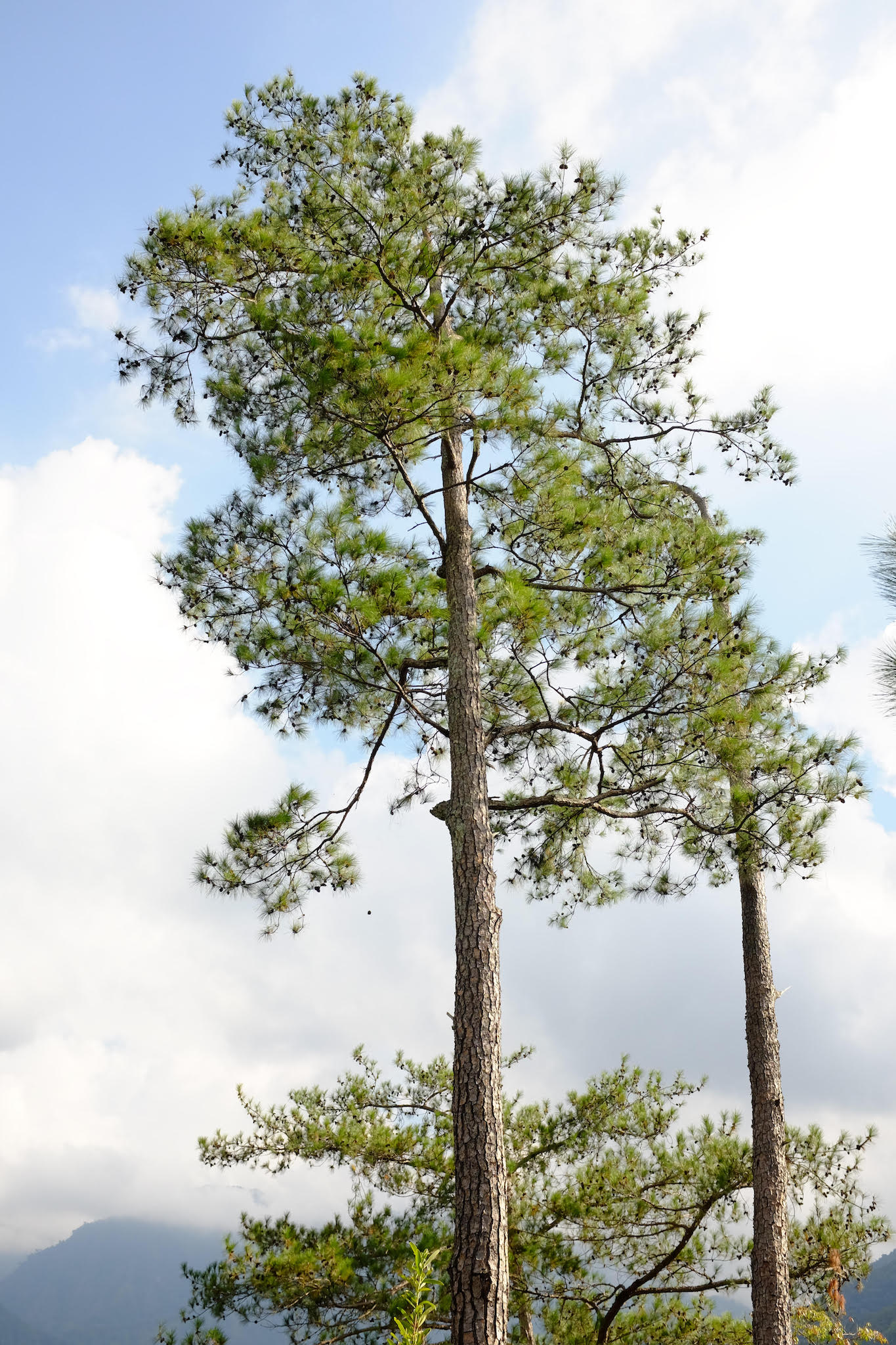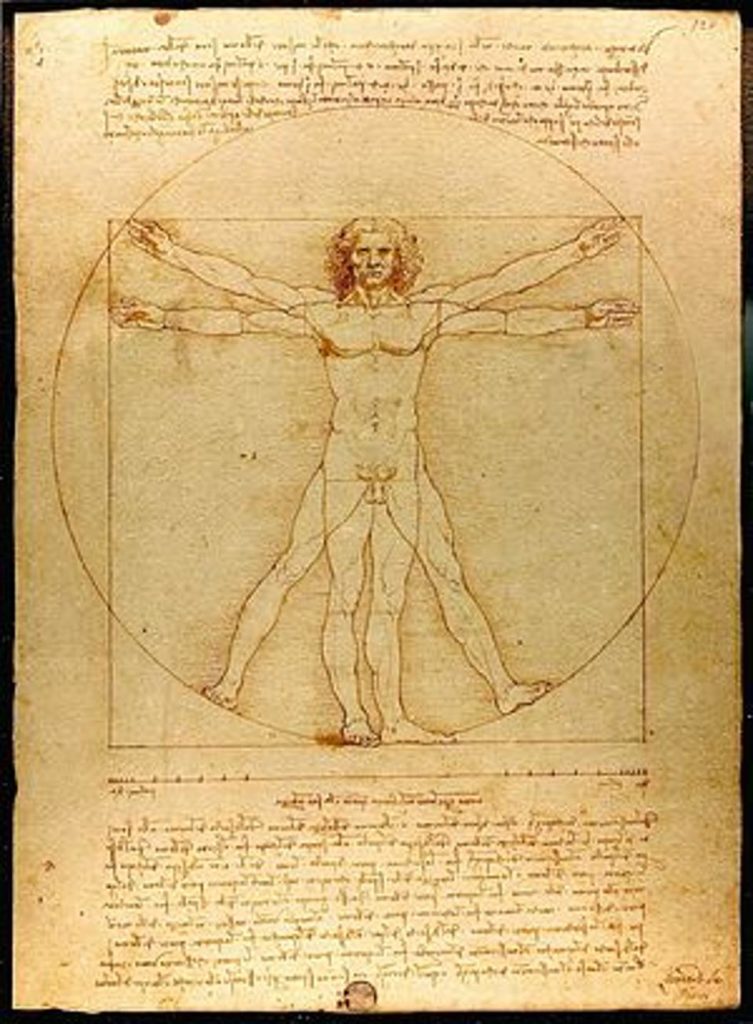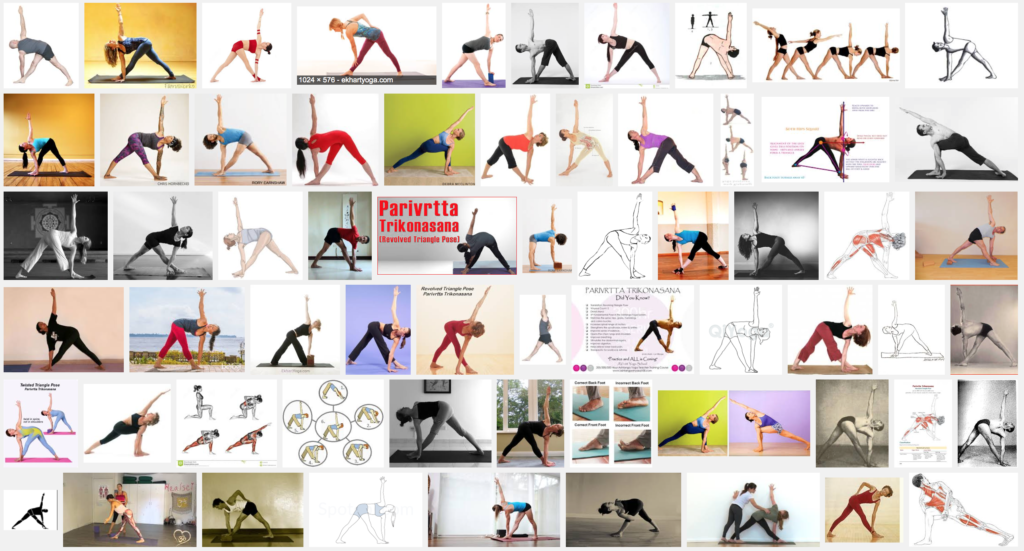2025-01-08 辦公室自救法則
非常多人在辦公室裡工作,從早上到下午七八個小時以上的時間,都是坐在椅子上。幾乎每個人都會抱怨肩頸痠痛,下背不舒服。
我常常建議同學一條最重要的「辦公室自救法則」:坐二十至三十分鐘,至少讓屁股離開座椅一分鐘,隨意伸展。
有的同學會問,到底要怎麼伸展?答案是,怎麼伸展都好。脖子、肩膀、骨盆、膝蓋、腳踝、手腕、手肘,不同的關節想怎麼動就都輕鬆動一動吧。
任何我們平常在教室「基礎課」裡一再練習的動作都好,放鬆心情、呼吸,能動的都動一動。想辦法幫自己把過去二三十分鐘因為姿勢不良累積的肌肉緊繃盡快釋放掉。
這些年老美流行一句話:Sitting is the new smoking,意思是說,一直坐著不動,簡直就是「沈默的殺手」,對人體的傷害可能比抽菸更嚴重。
具體來說,光是讓自己的屁股離開椅面,讓雙腳站直再走個幾步(原地踏步也行),讓兩條手臂往上往外隨便動一動,讓骨盆、肩膀、脖子轉一轉,讓眼睛閉上輕輕眼眶裡兜兜圈子,給自己一兩次深呼吸。每天能在辦公室裡執行個三五次,功效絕對遠高於一個禮拜去找按摩師一次。 XD
再精進一點的話,就是改良自己的座椅。如果有機會換椅子,我通常建議硬的椅面,平穩是基本要求,椅面能略高於膝蓋一點比較理想。還能搭配適當高度的桌子、電腦擺放高度就更理想了。(貴參參 kùi-som-som 的人體功學椅比你想的更沒效果。)
我雖然不用去辦公室上班,但每天在家裡、在教室也會有不少時間坐在電腦前看書或寫文章,我的保命法則是:「一想到就來個三次拜日式」、「動不動就去練個十下伏地挺身」。
自己的身體、自己的辦公室、自己的國家,都只能靠自己救。有強烈想自救的企圖心、再加上有簡單具體又可執行的方法,一定可以變出專屬於你、最適合你自己的自救法則!
#KT老師連寫一百天 022/100
#上班族 #久坐 #自救
2025-01-09 身土不二
前兩個禮拜開始讀一本書,一個植物學家描寫她的自然觀察與心得,讀得讓人心嚮往之,真希望也能就這樣一輩子單純做自己喜歡的事。
很可惜,不是每個人、每個社會、每個國家,都能有這樣的幸福。或許我們也曾經以為自己很幸福,只要那些不幸的事還沒發生在自己、家人、親朋好友身上。
他們帶著軍隊不請自來。他們強佔我們的資源、土地,命令我們關起探索的門窗,不可以去認識這片土地的歷史、環境,不可以上山下海,不可以講阿公阿媽爸爸媽媽講的話。他們叫我們努力認真賺錢就是了,不要多管閒事。他們說,政治是骯髒的事。我們怕弄髒自己,於是就乖乖聽話,當個凡事都不判斷、凡事點頭的好寶寶。
幸或者不幸,真的很難講。一輩子就當溫室花盆裡的小花小草,沒機會吹風淋雨曬真正的太陽;當別人豢養的寵物,有得吃就吃,該搖尾巴就搖尾巴,賭賭看在壽終正寢之前會不會被棄養或者虐殺。這樣,幸福嗎?
另一條路是主動選擇,像電影《駭客任務》(Matrix),要嘛選擇藍色藥丸,繼續沉睡在原本以為的舒適夢境度過餘生,或是選擇紅色藥丸,進入可能不安、不確定的現實世界。
現實世界,或者用身心靈、宗教領域慣用的術語來說,「實相」,乍看之下可能恐怖又嚇人。或許這個設計背後的機制,就是要我們不要看,永遠也不要看清楚。
然而就像我們的靜坐練習,一次一次摘除過去戴著的有色眼鏡,一次一次勇敢面對實相,終於才有機會看得更清楚明白。原來,滋養我們成長的這片土地,這個環境過去的歷史、未來的開展,就是我們自身的命運。身土不二。保護自己生長的土地,就是關心自己、愛護自己。這件事一點也不髒,一點也不是「多管閒事」。
現在我們知道他們要更進一步來毒害這片土地,要挖我們的根,要摧殘我們的下一代,要讓我們永遠屈服就範。
我們不會束手待斃。
我們會一起站起來。我們會一起捲起袖子,撩起褲管,一起捍衛這片美麗的土地、捍衛我們的存在、捍衛我們值得的幸福。
#KT老師連寫一百天 023/100
#幸福 #實相 #身土不二
2025-01-10 盡信地圖不如無地圖
以地圖的使用來說,我自己是這樣成長的。
小時候曾買過很大一張、收納時要對折好幾次的台北市地圖。不過也就是偶爾心血來潮,攤開來當成百科全書的心態隨意翻看。
國小國中階段,自己一個人能活動的範圍,主要都是雙腳能走到的地方,幾乎不可能迷路。再遠一點,也就是搭個 204 公車到植物園,搭 307 到西門町、台北車站,搭 0 西到龍山寺,搭 52 路到公館。探索的過程,完全沒有地圖參與的空間。
大學時有了自己的摩托車,開始能夠自在移動到遠一點的地方,但大概也就是出門前略翻一下地圖,知道大致上東南西北的方向,心裡面記一下要從哪座橋過新店溪、基隆河或淡水河。二十多歲騎著車想像自己在演公路電影,從台北市西南角的加蚋仔(Ka-la̍h-á)騎到政大,騎著縣道 106 到坪林到瑞芳,一路都在看風景,根本不必看地圖。
二十多年前剛開車的時候,後座擺了本厚厚的全台灣公路地圖集,一本在手,再加上一張嘴,基本上就是「一台車 thuh 規台灣」,開到哪都沒問題。
而如今,即使在台北市區裡找家沒去過的餐廳,從捷運站一出來,就是先拿出手機開 Google Maps,幾乎是徹底無意識地仰賴這個軟體。
手機上的地圖軟體真的超便利,市區、跨縣市,到哪裡都是引路明燈。尤其是爬山,離線地圖更是不可或缺的幫手,甚至是救命用的神器。但這樣的便利,同時也在弱化使用者找路的能力。
練身體、練頭腦,「用進廢退」(use it or lose it)幾乎都是顛撲不破的法則。科技愈來愈進步,我們愈來愈依賴這些便利無比的科技,結果就是突然一天才驚覺大腦和四肢竟退化到不可想像的地步。
以地圖這個例子來說,我認為最有效的對治方法,就是常常到不認識的地方,在安全無虞的情況下,盡量不使用地圖軟體。靠自己的雙眼、雙腳去探索目標,以及目標以外的世界,靠自己的一張嘴,去諮詢其他擁有在地知識的人,找到問題的答案,找到答案以外的問題。
這也是一種非常重要的自救能力喔。
#KT老師連寫一百天 024/100
#地圖 #科技 #用進廢退
2025-01-11 最高的武學心法?
「瑜珈的重點不在於做動作,而是在於清除做動作時會碰到的障礙」,這是瑜伽老師 Leslie Kaminoff 很常說的一句話,也一直是我日常教學與練習最重要的指引。
有的人練東練西,學這派學那派,就想找尋厲害的武學心法,想要打遍天下無敵手。也有人一直在追求最基本的、最高的,放諸四海皆準的指導原則,可以應用在各種身體動作都合宜的,彷彿是可以一招治百病的「聖杯」。
我一點也不想和任何人對打,但我的確曾經很愛追尋這樣的聖杯。
很長一段時間,我心目中的聖杯,或者說,動作的最高指導原則,是費登奎斯方法(Feldenkrais Method)的創始者 Moshe Feldenkrais 說過的一段話:
「頭必須是自由的,可以往任何方向移動;而下腹必須處在一種狀態,可以做它需要做的任何事,而又不會干擾頭部。身體的其餘部位和手臂則不需要用來產生力量。」(《身體的智慧》)
前輩、老師的話很厲害、很深,那是他們實踐多時而得到的智慧。我能做的就是努力咀嚼,想辦法消化成自己能吸收的養份。
長期的練習與教學,就是不斷在自己的身體和同學的反應裡觀察、思考:動作就是這麼回事嗎?這就是最高的武學心法、最好的動作指導原則嗎?我自己的操作與練習,有沒有帶來不一樣的體會與認識?
年紀比較大了,看得比較多了,不知不覺已經放下對聖杯的追尋。現在關心的都比較淺薄、務實,像是某個同學的肩頸痠痛,可以分享什麼具體可操作的建議;像是該持續做哪些準備,以面對未來可能還有的十年二十年甚至更長時間的需求?
#KT老師連寫一百天 025/100
#聖杯 #武學心法 #Kaminoff #Feldenkrais
2025-01-12 請頭腦讓位給腸胃道
天冷了就是很容易肚子餓,尤其晚上收工回到家,就是想吃點什麼東西,安撫胃腸和心情。可是好多次我在睡前吃的宵夜點心,麵包也好,餅乾也好,一上床躺著,腸胃道就會開始叫很大聲的那種不舒服的蠕動。
我想要找到「適合我的宵夜」。我不知道天底下有沒有這樣的東西。想了好久,找米製的點心吧。但選擇真的不多,或者,都還是有些不需要的添加物。有天心血來潮,想來試試看把「飯」當點心。
剛好冰箱裡還有點剩飯,進了電鍋蒸熱,淋上醬油,拌了一些味噌,像是模擬小時候吃的豬油拌飯。慢慢嚼著嚼著,彷彿收到消化系統傳回來的訊息:「這個 OK 喔!」。吃完熱飯,洗了個熱水澡,上床平躺之後,果然一切平靜,舒舒服服,身心滿足一覺到天明。
大家都會說要尊重身體的智慧,要傾聽身體的聲音。我覺得最具體的練習,就是請頭腦讓位給腸胃道:吃腸胃道喜歡的食物、用腸胃道喜歡的方式進食。
很多外面有名的料理,要嘛調味過重、要嘛太油太膩,眼睛、鼻子、感官、記憶一時無失察,這些就不需要進、不該進的,就全都進了。頭腦以為的美味,未必是身體、腸胃道鍾愛的。
另一種常見的問題,是進食的過程只專心在手機畫面、或者其他人聊天的內容,完全不把消化系統放在眼裡,不管是硬的軟的熱的冰的,只顧著囫圇吞棗,根本不在意腸胃道的抗議與求救聲。
即使進食的過程沒發現,消化之後的口氣、排氣、排遺、味道輕重,也會告訴我們哪些不該吃,或者不該那樣吃。長期讓消化系統不開心,我們日子過得也不會太愉快。
脾胃是後天之本、氣血生活之源。傾聽他們的心聲,尊重他們的智慧。他們不愛的,請頭腦也乖乖暫時讓位一下吧。
對了,最近我的新發現是,加一小撮柴魚片,味噌醬油拌飯瞬間升級為貓飯,腸胃道老大好像還蠻樂的。
#KT老師連寫一百天 026/100
#飲食 #覺知 #身體智慧 #傾聽
2025-01-13 「要發現事物最好的方法不能透過尋找」
每次和朋友約在捷運站或者人潮眾多的地點,常常朋友都已經看到我、甚至向我揮手,我卻還是找不到對方。朋友提醒過我,因為我總是把目光範圍鎖得太小,太侷限了。我總是在自己設定的小圈圈裡找尋,累得要死,甚至撞得頭破血流,怎麼也沒辦法找到想找的答案。
老實說,因為這樣被念,心裡實在不好受。直到有一天讀到苔蘚專家基默爾(Robin Wall Kimmerer)的這本書《三千分之一的森林》,我才恍然理解到這究竟怎麼一回事。
某一次基默爾在陌生的海灘想要尋找海星。其他海藻、海葵、藤壺什麼都看到了,海星卻怎麼找就是找不到。「失望之餘,我在潮池內站直身子,舒展僵硬的背部,突然間──我看到了!亮橘色,就在眼前的岩石上。然後一切就像簾幕被拉開了,到處都看得到牠們,像在黝黑的夏夜,星星一顆一顆閃耀著,橘色星星躲在黑色岩石縫間,布滿斑點的勃根地紅色星星伸出手臂,紫色星星窩在一起,像家人彼此簇擁著抵抗寒冷。尋牠千百度,原本看不見的突然間看得見了。」
基默爾說這是「昇華的經驗」。她引用一位長輩的教導,「要發現事物最好的方法不能透過尋找」,「要對目光所及之外的範圍敞開各種可能性,這樣你所尋覓的自然會出現。」
如果世界上真的有「當頭棒喝」這種事,對我來說,大概就是讀到這句話的感受。
「不能透過尋找」、「要對目光所及之外的範圍敞開各種可能性」。我整個人愣住了,一次又一次在心裡頭覆誦著這個句子。
我回想自己多次在山裡行走,想找的目標常常都找不到,但沒有預設的時候,身體和視線都放鬆,本來就存在於自然環境的各種植物,動物,現象,就一一顯露出來了。如果行走時目光只專注在步道上,就不容易看見腳邊不起眼的草欉裡,竟然會有一小株一小株寶藍色的龍膽花,或者彷彿突然從角落石頭縫裡冒出來、亮眼的台灣山菊。順著聲音的指引,可能會瞥見藏在樹梢的五色鳥或是紅嘴黑鵯。偶爾停下腳步調息,才會享受到山棕葉片撥動的節奏聲響,以及空中飄來山棕淡雅的花香。
「不能透過尋找」、「要對目光所及之外的範圍敞開各種可能性」。這差不多是一個禪修老師能給的最好指引。
我要提醒自己記得,「要對目光所及之外的範圍敞開各種可能性」。可能再轉個彎,再換個角度,「突然間──我看到了!亮橘色,就在眼前的岩石上。然後一切就像簾幕被拉開了,到處都看得到牠們,像在黝黑的夏夜,星星一顆一顆閃耀著」,「尋牠千百度,原本看不見的突然間看得見了。」
#KT老師連寫一百天 027/100
#尋找 #發現 #瑜伽老師讀什麼書
2025-01-14 「二十億耳症候群」
你每天都練身體、練靜坐、或者練習任何自己想精進的目標嗎?
「練習頻率」一直是同學們最常問我的問題之一。我的確是每天練,或者精確一點說,差不多是每天練。但總也有些時候,會因為像是晚上和朋友聚會而熬夜,隔天爬不起來的緣故,於是就跳過了一天的練習。
早些年常會因為這樣的「偷懶」而自責,現在早就看開了,沒必要把自己逼得那麼緊。適度的「偷懶」或者休息,對於身心訓練都是必要的。
佛陀有個學生名叫「二十億耳」,他有次獨自練習靜坐時想著,自己努力認真拚了命練,卻總是無法突破、沒得到最終的解脫,幾乎就要放棄練習,準備回家享受以前的榮華富貴。佛陀聽到他的心聲,就去開導他。佛陀知道二十億耳出家前琴彈得不錯,就問他,「琴弦調得太緊或者太鬆,聲音會好聽嗎?」二十億耳回說「不好聽」,佛陀再問,「那如果琴弦調得鬆緊恰好適中,聲音會好聽嗎?」二十億耳回說,「這樣就會好聽了」。(《雜阿含第254經》)
佛陀是在講練習的心態,「精進太急」、「精進太緩」都該避免。據說二十億耳照著這樣的心法再繼續練,沒多久就成就解脫了。
我來超譯一下佛陀的教導:以身體的鍛練來說,假設本來的目標是每天都要認真練一個小時,因應不同的狀況,也可以給自己一點彈性,例如說,調整成每週累積的練習時間到達七個小時。有一兩天少練一點或者有事沒辦法練,其他幾天就多增加練習的時間補回饋。這樣還是能完成類似程度的目標,剛好讓身體適度休息,也不會因為達不到目標而產生過度的壓力。
能每天都維持固定的時段,練習固定長度的時間量,這樣的理想當然很棒。但現實上不免有些不可抗力的變化,給自己足夠、但不過頭的壓力,免得一時達不到目標,反而出現「算了,反正我做不到,乾脆就不練了」的「二十億耳症候群」。
#KT老師連寫一百天 028/100
#頻率 #壓力 #雜阿含 #琴喻



